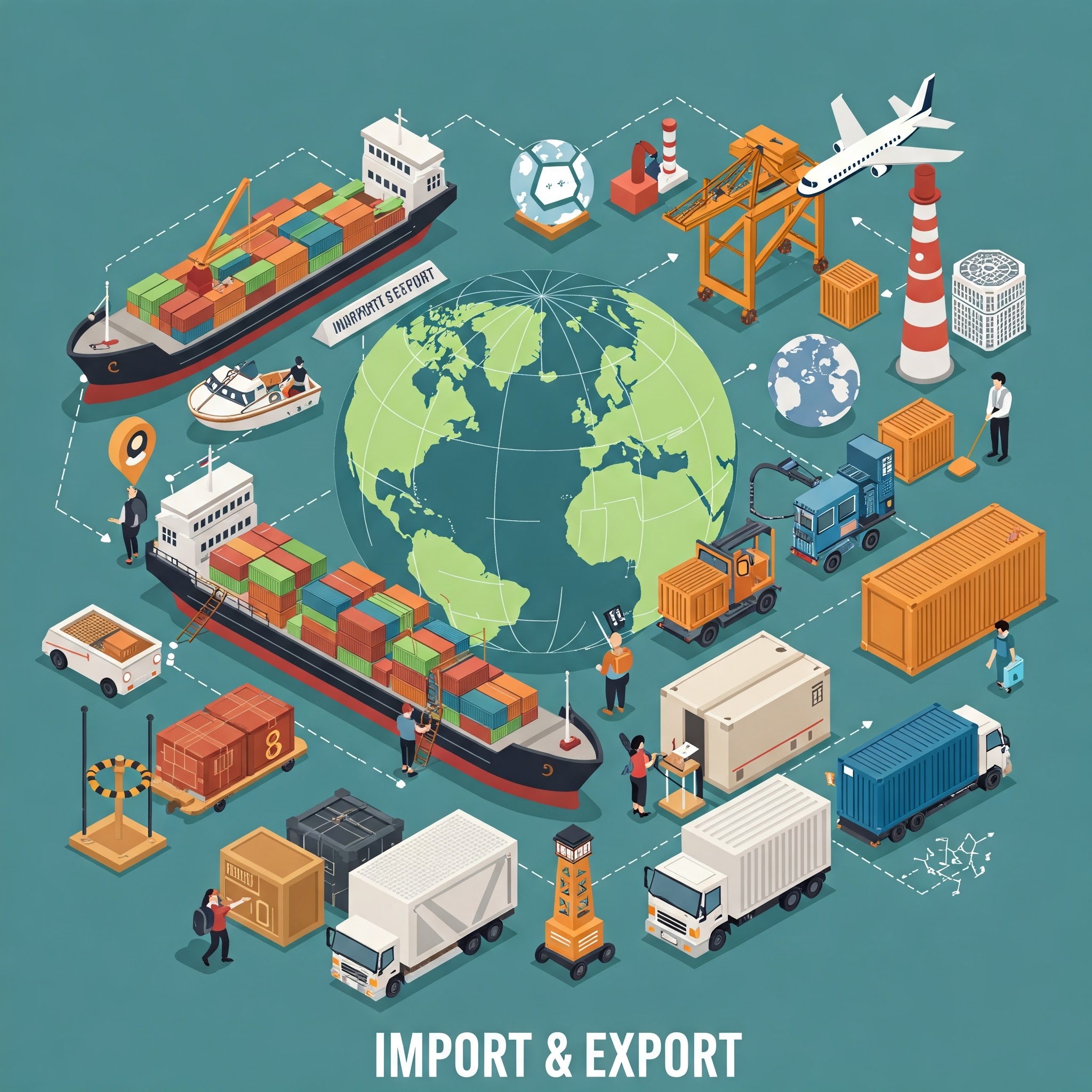
Importing and exporting scrap metal involves the trade of recyclable materials like aluminum, copper, steel, and iron, which are processed and reused in manufacturing. This trade can be international, with countries importing scrap metal to use as raw material for production or exporting it to markets where it can be recycled or reused.
Key Steps in Import & Export of Scrap Metal:
Understanding Regulations:
Export Licenses and Permits: Countries may require specific permits or licenses to export scrap metal. Regulations can vary by country, so it's crucial to check the legal requirements for both the exporting and importing country.
Environmental Standards: Both exporting and importing countries may have environmental regulations concerning the recycling and handling of scrap metal, ensuring that it is processed safely and sustainably.
Quality Standards:
Scrap metal should be clean and free from contaminants (such as plastics, dirt, or other materials), as it will be processed in a recycling facility. Different countries may have different standards for the quality of scrap metal that can be imported or exported.
Packaging and Shipping:
Sorting and Baling: Scrap metal must be sorted by type (e.g., aluminum, copper, steel) and often baled for easy transport. This ensures that the scrap is easy to handle and that shipping costs are minimized.
Transportation: Typically, scrap metal is shipped in large containers, and it can be transported by truck, rail, or ship depending on the export destination.
Market and Demand:
The demand for specific types of scrap metal varies depending on the market. For example, countries with high industrial production might import more steel or aluminum scrap for use in manufacturing, while other countries may export scrap metal if they lack the infrastructure to process it domestically.
Customs and Tariffs:
International trade of scrap metal is subject to customs procedures. Both the exporter and importer must comply with tariffs, duties, and taxes associated with the shipment. Importers may also need to provide certifications proving the metal's quality and purity.
Pricing:
The price of scrap metal fluctuates based on market demand, the metal's quality, and its recycling potential. Some scrap metal prices are tied to global commodities markets (such as copper and aluminum), while others may be more locally driven.
Trade Partners and Contracts:
Establishing strong trade relationships and contracts with partners is crucial for ensuring smooth transactions. Contracts should outline payment terms, shipping schedules, quality expectations, and any warranties or claims.
Global Trends in Scrap Metal Import & Export:
China: Historically, China has been one of the largest importers of scrap metal, especially for aluminum and steel. However, they have started to reduce imports due to stricter environmental regulations.
European Union: The EU is a significant exporter of scrap metal, with countries like Germany and the UK leading the way. The EU is also a major player in the import market for certain types of scrap.
U.S. & Japan: The United States and Japan are major exporters, particularly for high-quality scrap metal like copper and aluminum.
Challenges in Scrap Metal Trade:
Environmental Impact: Poor handling of scrap metal, especially illegal dumping, can cause environmental harm. Some countries have banned or restricted the import of low-quality or contaminated scrap.
Fluctuating Prices: Scrap metal prices can fluctuate, making it difficult for businesses to predict costs and revenues accurately.
Trade Barriers: Some countries impose trade barriers or tariffs on scrap metal imports or exports to protect domestic industries, which can disrupt global trade flows.